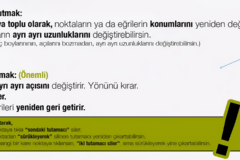Anti-aliasing
Anti-aliasing is a process which attempts to minimize the appearance of aliased or jagged diagonal edges, termed "jaggies."these give text or images a rough digital appearance:
300% |
||
Anti-aliasing removes these jaggies and gives the appearance of smoother edges and higher resolution. It works by taking into account how much an ideal edge overlaps adjacent pixels. The aliased edge simply rounds up or down with no intermediate value, whereas the anti-aliased edge gives a value proportional to how much of the edge was within each pixel:
 |
  |
|||
| Ideal Edge on Low Resolution Grid | Choose: | Aliased | Anti-Aliased | |
A major obstacle when enlarging an image is preventing the interpolator from inducing or exacerbating aliasing. Many adaptive interpolators detect the presence of edges and adjust to minimize aliasing while still retaining edge sharpness. Since an anti-aliased edge contains information about that edge's location at higher resolutions, it is also conceivable that a powerful adaptive (edge-detecting) interpolator could at least partially reconstruct this edge when enlarging.
Kaynak www.cambridgeincolour.com/tutorials/image-interpolation.htm






















